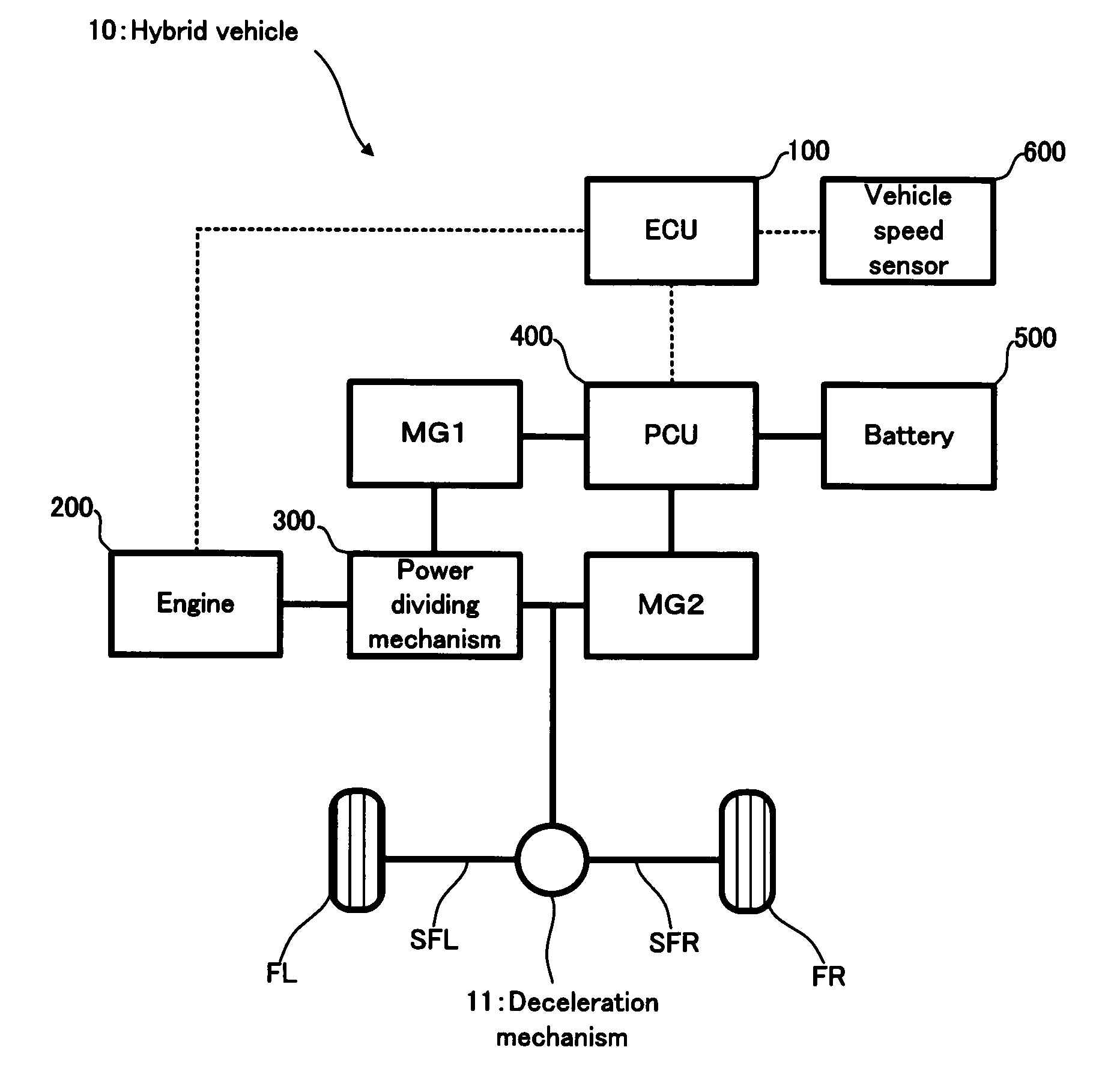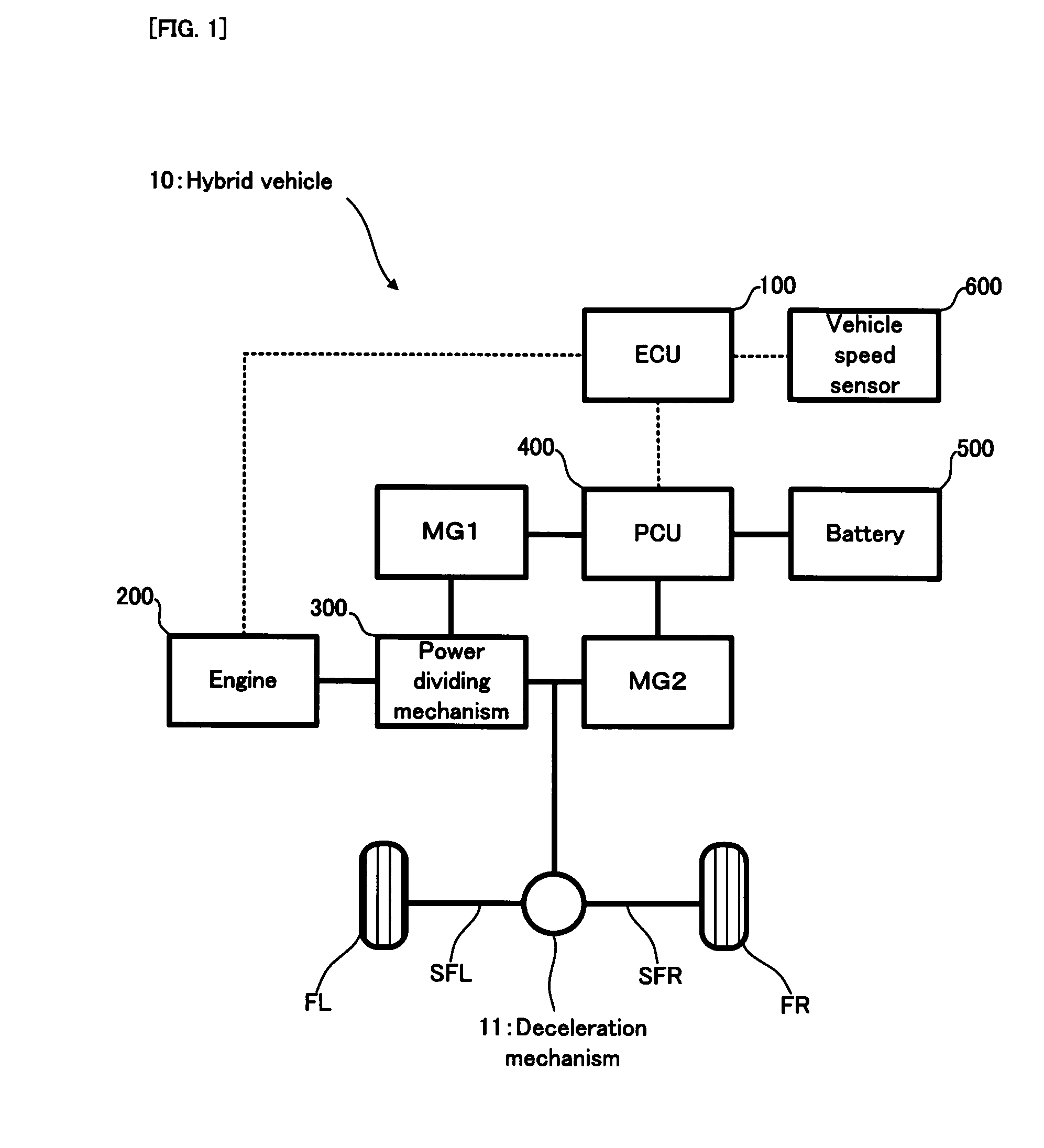Control apparatus for hybrid driving apparatus
a control apparatus and hybrid technology, applied in the direction of process and machine control, instruments, etc., can solve the problems of easy actualization of torque variation, hard to exclude, and torque variation in the torque of the output member, so as to facilitate interlocking operation, correct or compensate the dimensional tolerance and dimensional accuracy of each of the engagement elements. , the effect of large engagement for
- Summary
- Abstract
- Description
- Claims
- Application Information
AI Technical Summary
Benefits of technology
Problems solved by technology
Method used
Image
Examples
first embodiment
Structure of Embodiment
[0081]Firstly, with reference to FIG. 1, an explanation will be given on the structure of a hybrid vehicle 10 in a first embodiment of the present invention. FIG. 1 is a schematic configuration diagram conceptually showing the structure of the hybrid vehicle 10.
[0082]In FIG. 1, the hybrid vehicle 10 is provided with an ECU 100; an engine 200; a power dividing mechanism 300; a motor generator MG1 (hereinafter abbreviated to a “MG1”, as occasion demands); a motor generator MG2 (hereinafter abbreviated to a “MG2”, as occasion demands); a PCU (Power Control Unit) 400; a battery 500; and a vehicle speed sensor 600. The hybrid vehicle 10 is one example of the “vehicle” of the present invention.
[0083]The ECU 100 is provided with a CPU (Central Processing unit), a ROM (Read Only Memory), a RAM, and the like. The ECU 100 is an electronic control unit, adapted to control the entire operation of the hybrid vehicle 10, and it is one example of the “control apparatus for...
embodiment
Operation of Embodiment
Details of Speed-Change Mode
[0113]The power dividing mechanism 300 functions as the speed-changing apparatus or gearbox of the hybrid vehicle 10. At this time, in the power dividing mechanism 300, the following two types of speed-change modes are realized: a stepless speed-change mode and a fixed speed-change mode.
[0114]When the power dividing mechanism 300 drives the engine 200 in the condition that the corresponding rotational element (which is the sun gear 341 of the second planetary gear mechanism 340 in this case) is not fixed by the clutch mechanism 350, the engine torque is divided into and transmitted to the motor generator MG1 and the drive shaft 320, by the power dividing mechanism 300. This is due to the differential operation of the power dividing mechanism 300. By increasing or decreasing the rotational speed of the motor generator MG1, the combustion rotational speed NE of the engine 200 is controlled in a stepless (or continuous) manner. This ...
PUM
 Login to View More
Login to View More Abstract
Description
Claims
Application Information
 Login to View More
Login to View More - R&D
- Intellectual Property
- Life Sciences
- Materials
- Tech Scout
- Unparalleled Data Quality
- Higher Quality Content
- 60% Fewer Hallucinations
Browse by: Latest US Patents, China's latest patents, Technical Efficacy Thesaurus, Application Domain, Technology Topic, Popular Technical Reports.
© 2025 PatSnap. All rights reserved.Legal|Privacy policy|Modern Slavery Act Transparency Statement|Sitemap|About US| Contact US: help@patsnap.com



